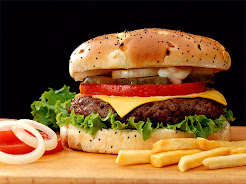
Tahoooo.... Tahoooo.... that's the sound that you hear in the morning. Skinny men carrying two big tin containers filled with soya drink or Taho. They connect the two tin containers with a long sturdy stick in able to place the containers on opposite side. Therefore this will allow the Taho vendors to carry the two containers at the same time.
So what is a Taho? Taho is a Philippine snack food made of fresh soft/silken tofu, arnibal (brown sugar and vanilla syrup), and pearl sago. It is a staple comfort food and it is very affordable. The cheapest is just Php 5.
It may sound funny but even you can make big profits out of taho. You can start at your own backyard or garage. You can use your space at your house. It doesn't matter if it is a garage, a laundry area, a backyard, or a stock room. As long as you don't disturb the neighbors in the wee mornings and as long as you don't pollute the surroundings in your vicinity you will do fine.
Curious? Here are the details on making the famous snack food.
HOW TO MAKE TAHO:
1.) Soak soya beans for 30 mins. in topwater.
2.) Dehull the soya beans using your hands until skin of beans are peeled.
3.) Soak the soya beans for 8 hours with generous amount of water. After 8 hours, grind the soaked beans as fine as possible(you can use a blender), then cooked it and let it boil in 180 degrees for about 20 mins.
4.) Drain the cooked soya beans to separate the soya milk to the soy pulp. Make sure you squeeze all the soya pulp for excess soya milk (you can use a fine piece of cloth).
5.) Then apply a coagulating powder. Stir one or twice until gel-like form is achieved.
6.) Put toppings: Sago and Syrup.
7.) Start selling!
For the Taho/Tawa syrups
1 cup brown sugar
1 cup water
Dissolve sugar in water and let it boil for 5 minutes. Use more sugar and cook longer if you want thicker syrup.
Back in the day, I used to buy reject taho or "sapal" at a cheap price from a taho factory. I used this "sapal" as a additional food additive for my pigs in my farm in Batangas. I normally buy 6 big containers a week. So that makes me their "suki" or regular customer. As a "suki" I have the privilege to see and watch their operation in their taho factory.
I normally go there at 3 am. That's when they are halfway done cooking taho. Inside the factory I could see their large Taho cooking equipments. There are lots of people too who have different types of duties in the taho factory.
If you want to learn from the experts better use my method.
In making income, what you need to do is gather a lot of taho sellers (mag-lalako). You sell your taho (finished product) at a wholesale price to the taho sellers. The taho sellers will then sell it to their designated areas at a retail price. In this case it's a win-win situation. You earn profit, your taho sellers earns profit.
Let's just assume that the selling price of a taho is Php 10 per cup. If your taho seller was able to accumulate 80 cups in one day then he has a gross income of Php 800. But that's only one taho seller. What if you got 20 taho sellers, you can reach a gross sale of Php 16,000 a day.
The key factor here is your taho sellers. If you make them happy and let them have a "fair" share of the taho earnings, they will keep coming back to you. This giving you more revenues.
You can also make tokwa, soya milk and other soya by-products for additional earning. Mind you that most Piggery owners buy "sapal" from taho factory for their pig needs.
Taho is not only nutritious on your health but it is also nutritious on your financial department.









Post a Comment